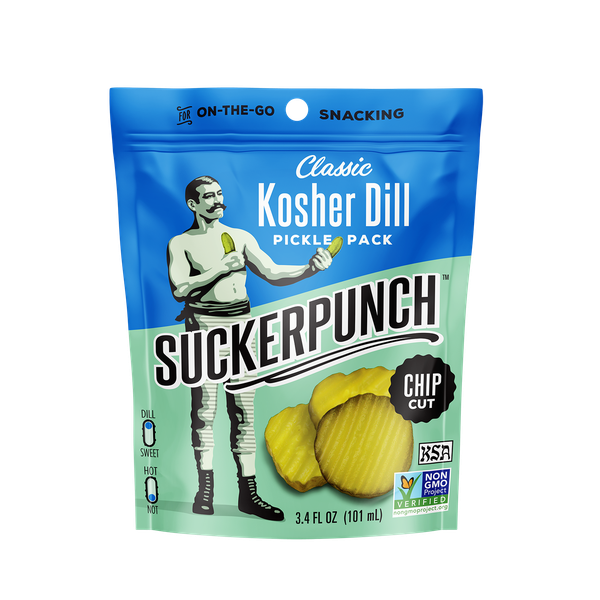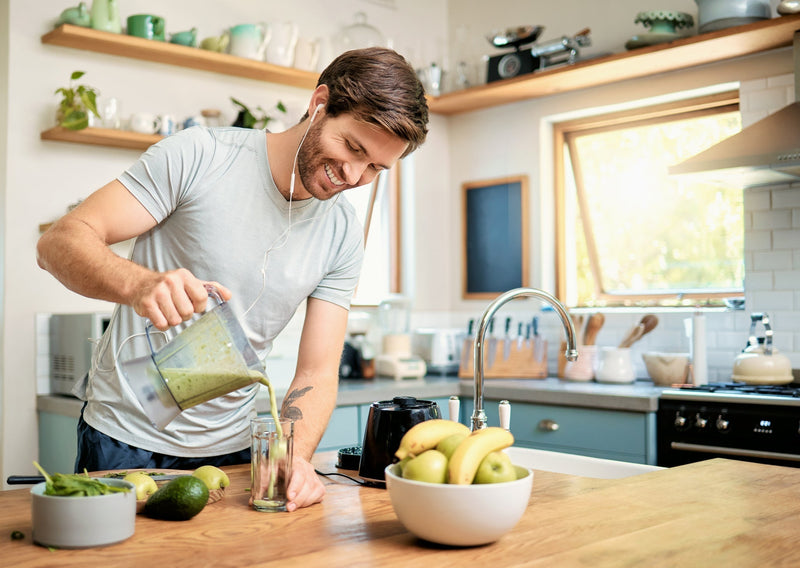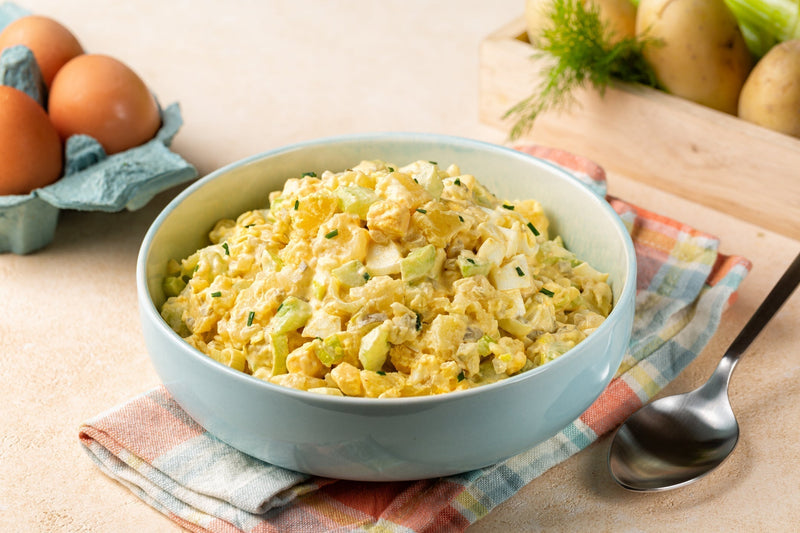
How are Pickles Made?
If you can eat it, you can pickle it. Now, that’s not to say that whatever you pickle is going to taste good, but there have been plenty of epicurean experiments that end with the pickled version of a food that is even better than the original.
For example, that stuff that the Germans call sauerkraut and the Koreans call kimchi is actually just pickled cabbage (we may not agree on a name, but we can agree that both are delicious). Albeit, both are delectable. Then there are things like pickled eggs... There are the detestable ones that sit in a plastic tub at your local watering hole or superior ones like you can find at too-good-for-you grocery stores. When it comes to pickled products, the options are endless. Have you ever wondered: How are pickles made? Keep reading for a comprehensive guide on all things pickles.
A Quick Peek at Pickle History
The history of pickles is an exciting one. Pickling popped up around 4,000 years ago, and it is just about as common a worldwide culinary practice as there is. Originally used to preserve foods, we now prefer to pickle things because, well, it makes them taste better. Case in point, the classic pickled cucumber.
The pickled cucumber is so good that they decided to name it after the process itself, aka The Pickle. Pickles have been around as long as anything else of its same importance...you know, language, math, written recipes, and beer. While the history of the pickle is very intriguing, it’s a story for another time. You came here with questions, and darn it, you want answers.
The unembellished answer to how pickles are made is quite literally in the name...they’re pickled! Pickles are called pickles because they were once cucumbers that have now become pickled. Not quite the conundrum you were expecting, we’re sure.
A Food By Any Other Name
Pickles are one of the only foods we eat where we pretend it’s a totally different food than what it actually is. A pickle is actually a cucumber…a pickled cucumber. You probably remember the moment you found out that all pickles begin their short lives as cucumbers, or maybe you’re finding out now. We’ll give you a minute...
Blinded By Science!
If we’re being honest, cucumbers and pickles do taste pretty different, and if we’re being honest again that’s a good thing. While giving these two snappy snacks a totally different name seems bizarre, cucumbers and pickled cucumbers are not actually the same thing.
Buckle up for this unexpected science lesson. When a cucumber sits in brine for a long enough period, the fruit's chemical composition begins to change. Eventually, the pickling process prevails, and the food immersed in brine becomes acidic and resistant to long term-decomposition. The long term is an important distinguishing factor…take notes; you’ll need to know that for later.
A Complicated Family Dynamic
Remember earlier when we said that pickling was originally used for food storage? The pickling process doesn’t just change the flavor of the food; it preserves altering the molecular structure of the food itself. So yes, while technically a pickle and a cucumber are the same thing, it’s less of an identical twin situation and more of a cool cousin kind of a thing.
Think of a pickle as the immensely cool cousin of the cucumber. They share a lot of the same DNA, but while the cucumber was growing up on some cushy farm, its cousin, the pickle was studying abroad in a brine-filled metropolis. They’re both technically cucumbers, but one spent its life in the ground, and the other one soaked up the world around it, developed some fame, and a renowned reputation for being a real kick in the shorts. We call that second (obviously much more captivating) cucumber a pickle.
The Classic Method For Pickling Cucumbers
Now that you have a little context for how pickles are made, it’s time to get into the nitty-gritty. The classic method for pickling cucumbers is called lacto-fermentation. This chemical process happens when salt mixes with the natural sugar of food, such as a cucumber, to create acid.
A cucumber is a plant, which means it contains a natural sugar called chlorophyll. As the cucumber sits in a salty vinegar brine, the saltwater begins to break down the cucumber skin cells, where much of the chlorophyll lives.
As the salt breaks down the cucumber, the cucumber excretes sugar in the form of chlorophyll. As the skin gives off more sugar, the salt mixes with the natural sugars, and lactic microbial organisms form. Yeah, we bet you didn’t realize sugar had so many hidden talents.
Remember when we said to remember long-term decomposition? This is why. The process wherein these organisms digest the sugar and produce acid, kills bacteria and creates a totally sterile and preserved environment (a whole lot of life and death goes into the pickle-producing process). Short-term degradation of the cucumber skin creates the inevitable chemical change that makes the pickle a champion amongst naturally preserved foods.
The cucumber, void of all sugar and completely sanitary, is free to drink this now acidic and tangy brine to become the pickle you know and cherish. This process that requires a little bit of short-term decomposition actually transforms the pickle into long-term decomposition resistant. Pickles aren’t just delicious, they’re genetically superior.
The SuckerPunch Difference
While the basic method of pickling cucumbers hasn’t changed in quite some time, SuckerPunch is throwing down the gauntlet. While fermented pickles use sugar and water, brined pickles use vinegar and salt. At SuckerPunch, our pickles pack a better punch because our method uses organic, GMO-free ingredients to minimize unwanted chemical interactions and maximizing taste for a snappier snack that punches back. Tired of boring pickles? It’s time to ditch the classic kosher dill pickles and choose a pickle that savors your taste buds. SuckerPunch uses a smaller cucumber with fewer seeds and thinner skin that creates a delicious and crunchy pickle.
Selecting The Ideal Cucumber
The SuckerPunch Difference starts with the perfect cucumber. After all, you can’t make the perfect pickle unless you start with the ideal cuke.
Have you ever wondered why some pickles have the perfect snap while others are mushy and lackluster? Picking a perfect cucumber is one of the pivotal distinctions between the perfect snap and a disappointing, crunch-less, soggy mess.
SuckerPunch uses only locally sourced, in-season cucumbers to create our superior pickles. The fact that our cucumbers change seasonally helps ensure that the flavor of our pickles is always perfect.
You Gotta Have The Juice!
At SuckerPunch, our cucumbers put themselves through a rigorous juice cleanse. Instead of a three-day master cleanse, cucumbers drink in as much of our 11 spice blend-infused juice as they can.
This helps with the transition from sweet cucumbers to brine battered pickles. In a good pickle, the cucumber flavor is always there; it’s just re-invented and intensified, allowing the pickle juice to have its moment in the spotlight.
Timing Is Everything
Once you have the best cucumbers soaking in high-quality pickle juice, you have to wait the right amount of time. Too short, and the pickle won’t pick up the brine's nuance, but too long and the pickle may start to ferment.
Ok, the last paragraph may have been a little hyperbolic, but the truth is every batch of pickles is a little different. In reality, a pickle can be ready in as little as two hours, but it can also stay good in its brine for up to two years if properly stored!
At SuckerPunch, our pickles are done in small batches to ensure maximum flavor and perfect pickles every time. While we can’t give away too many of our secrets, we can tell you that our pickles brine for much longer than two hours but way shorter than two years!
A Tale Of Two Pickles: Glass vs. Plastic Packaging
If you were making your own pickles at home, you would more than likely brine them in the same jar you would store them in. With larger pickle distributors, pickles are pickled in one container (typically a larger vessel depending on the size of the batch) and then put into a mason jar once the pickling process is complete.
When it comes to packaging pickles, glass is a must. If you ever see pickles packaged in plastic, run away! Glass is great because it doesn’t give off chemicals the way plastic does. Harmful chemicals given off by plastic not only taint the flavor of the pickles, they’re also bad for you. At SuckerPunch, we package our pickles in jars so you can be sure that your pickles are fresh, succulent and flavor-filled.
The only exception to our glass-only policy is with our SuckerPunch Pickle Chip Snack Packs. These little gems are meant to be taken with you so you can have pickles whenever a craving strikes. Glass isn’t exactly travel-friendly, so we package these delectable pickle chips in a foil-lined plastic substitute resealable bag. Admittedly it’s not glass. But it’s still not plastic, so your pickles stay fresh and chemical-free.
Follow SuckerPunch For Inside Looks
The pickle-making process may be a time-honored tradition, but SuckerPunch Gourmet takes pickle-making to a new level. Our small batch pickles are quickly becoming world-famous, and you can browse our products and find us in grocery stores all over the United States.
If you are interested in what makes SuckerPunch unique, check out our About Us page to learn more. Follow us on social media for inside looks into our pickle-making process and feel free to contact us with a question or just drop us a line to say hey!
We love sharing our passion for perfect pickles, and it makes us proud to see how many SuckerPunch enthusiasts enjoy popping the top on a jar of our pickles.

















































